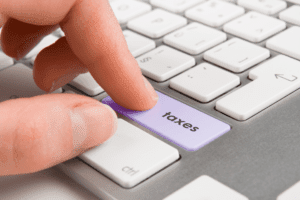Content
- It helps in taking complete control of your finances
- What Comes First, a Budget or a Forecast?
- What is the purpose of a budget? (And why you need it?)
- Budget vs. forecast FAQ
- What are the key differences between budgeting and forecasting?
- How to Select Budgeting Software
- What is the main purpose of the budget?
- What Are Budgeting And Forecasting?

Since forecasts are updated regularly, these initial projections aren’t set in stone. Say that in March and April you experience 3% MoM growth instead of your predicted 2%. This forecast tells you that if you keep the same 2% MoM revenue growth, you’ll achieve a total revenue of $3.42m, falling short of your $3.6m goal. The budget also outlines goals for operating expenses, which add up to $2.8m. If you meet both revenue and expenses targets, your operating income will be $0.2m. A business will generally only have one budget, while it may have several forecasts.

Forecasting helps you make any necessary adjustments in focus or spending, as business can change over the course of a year. For example, if a major customer is reducing or adding to their volume of business with you, this will have a major impact on your operations and cash flow. If business scenarios are only considered using budgeting techniques, the tendency is to be overly cautious. The industry term stretch-goal is used to indicate when a business is setting a higher goal than originally sought or thought possible. When reasonable stretch goals are set and recorded, they become the plan of action. While budgeting and forecasting involve predicting future events, they have different objectives, time frames, and focuses.
It helps in taking complete control of your finances
A budget is a detailed statement of expected revenues and expenditures which quantifies the tactical plans of the management to reach a desired goal for the company during a specified period. Forecasting estimates future outcomes that quantify the company’s direction during the forecasted period. Forecasts, being strategic, help companies to realize their growth plans. Financial forecasting will help you to model various scenarios and evaluate whether your company will meet your strategic growth plan. A budget is a management tool used to forecast revenues and expenses during a specified period to identify avenues for cost-cutting and be more efficient and productive in operations.
- A longer-term forecast might span several years and feed a strategic business plan.
- The forecasting process above relies on the straight-line method, which assumes your company’s historical growth rate will stay the same.
- Budgeting and forecasting are financial tools that businesses use to plan for growth, and as such, it’s vital for your accounting team to have a solid grasp of both.
- It includes creating an outline that determines the direction in which the business should go.
- Many businesses still base their strategy on annual plans and budgets, which is a management technique developed over a century ago.
This influences which products we write about and where and how the product appears on a page. Our partners cannot pay us to guarantee favorable reviews of their products or services. If you looking for ways to cut down on your food expenses, you should check out my post on how to save money on grocery shopping. When you start looking at your day-to-day expenses more closely, you will be surprised to find many wasteful expenditures that can be avoided. When you budget, you review each one of your expenses and you can easily find areas where you can cut down on your expenses. There will be many life events that will affect your family’s finances from time to time.
What Comes First, a Budget or a Forecast?
Then, as the year progresses, forecasts serve as a way to monitor progress and see if the company is on track. Let’s say you have an annual budget goal of increasing revenue by 10%. There are a few different ways to achieve that — you could increase sales to your existing market, target a new market, or raise prices. View loan offers, set up business banking, receive payments and track your cash flow with the Lendio mobile app. Historically financial modeling has been hard, complicated, and inaccurate. The Finmark Blog is here to educate founders on key financial metrics, startup best practices, and everything else to give you the confidence to drive your business forward.
Budgeting is not as close to reality because you are essentially putting down goals and where you see your business at a particular time. Budgeting includes comparing the budget set by your business with the actual results. The difference shows how close or how far you are from https://www.bookstime.com/articles/hotel-accounting your goals. If the difference is too wide, you are not close to achieving your goals at all. Budgeting can enable you to make changes to your business strategy because you are comparing budgets which allow you to understand the current and expected business performance.
What is the purpose of a budget? (And why you need it?)
Compare your results to your budget periodically to see how you’re doing. If expenses in a certain area exceed your budget, dig deeper to see if the overage is from overspending. Forecasting helps the business in taking immediate actions difference between budget and forecast by examining and analyzing the data provided. It can be done by adopting qualitative or quantitative or the combination of the two methods. While most budgets are created for an entire year, that is not a hard-and-fast rule.
And you can help your small business clients achieve their goals by helping them develop the plan. To correct it, you can explore a couple different revenue scenarios, including ones based on more conservative assumptions. This way, you’ll be able to understand what happens to your budget even if you fall short of ideal performance.